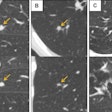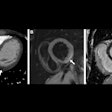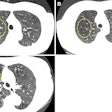
Do the U.S. Preventive Services Task Force (USPSTF) lung cancer screening guidelines contribute to gender disparities in eligibility? It appears so, according to a study published July 9 in the journal Chest.
However, the problem can be mitigated by using the Prostate, Lung, Colorectal, and Ovarian (PLCO) m2012 risk-prediction model for lung cancer screening assessment, wrote a group led by Dr. Mary Pasquinelli of the University of Illinois in Chicago.
The USPSTF 2021 guidance lowers the lung cancer screening starting age from 55 to 50 and adjusts smoking history from 30 pack years to 20 pack years. PLCOm2012 includes 11 predicting factors such as sociodemographic, medical history, and smoking exposure variables.
Pasquinelli's group compared the sensitivity of the USPSTF's lung cancer screening guidance to PLCOm2012 eligibility criteria by gender via a study that included 883 lung cancer cases from the Chicago Race Eligibility for Screening Cohort. PLCOm2012 was compared to the USPSTF's 2013 guidance with a risk threshold of ≥ 1.7% per six years and to the USPSTF 2021 criteria with a risk threshold of ≥ 1% per six years.
The team found the following:
- Sensitivity for screening using the USPSTF 2013 guidance was 46.7% for women and 64.6% for men.
- Sensitivity for screening using the USPSTF 2021 guidance was 56.8% for women and 71.8% for men.
- PLCOm2012 with a ≥ 1.7% threshold per six years had a sensitivity of 64.6% for women and 70.4% for men.
- PLCOm2012 with a ≥ 1.0% threshold per six years had a sensitivity of 77.4% for women and 82.4% for men.
"Although the USPSTF 2021 eligibility criteria are more sensitive than the USPSTF 2013 guidelines, there remains gender disparities in eligibility," the authors concluded. "Adding the PLCOm2012 risk prediction model to the USPSTF guidelines would improve sensitivity and attenuate gender disparities."



















